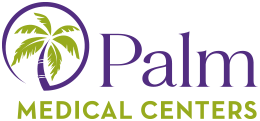Common Cold
Introduction
Colds are a very common medical condition. There are over two hundred viruses that can cause the common cold. The viruses are easily transmitted from person to person. Coughing, sneezing, a sore throat, and a runny nose are typical cold symptoms. There is no cure for the common cold. Symptoms may be relieved with rest, over-the-counter medications, and by drinking plenty of fluids.Anatomy
Causes
Symptoms
Diagnosis
Treatment
Prevention
Am I at Risk
Certain situations may place you at a higher risk for contracting a cold. Essentially, the more people you are around the more likely you are to catch a cold. Being near people with colds that cough, sneeze, and blow their noses increases your risk. Cold incidences increase during the winter months or rainy season when people spend more time indoors. You are at a higher risk of contracting colds if you touch public items, such as grocery carts, office phones, keyboards, and bus or subway railings. Shaking hands with a person that has a cold increases your risk of catching a cold.Complications

Copyright © - iHealthSpot Interactive - www.iHealthSpot.com
This information is intended for educational and informational purposes only. It should not be used in place of an individual consultation or examination or replace the advice of your health care professional and should not be relied upon to determine diagnosis or course of treatment.
The iHealthSpot patient education library was written collaboratively by the iHealthSpot editorial team which includes Senior Medical Authors Dr. Mary Car-Blanchard, OTD/OTR/L and Valerie K. Clark, and the following editorial advisors: Steve Meadows, MD, Ernie F. Soto, DDS, Ronald J. Glatzer, MD, Jonathan Rosenberg, MD, Christopher M. Nolte, MD, David Applebaum, MD, Jonathan M. Tarrash, MD, and Paula Soto, RN/BSN. This content complies with the HONcode standard for trustworthy health information. The library commenced development on September 1, 2005 with the latest update/addition on February 16, 2022. For information on iHealthSpot’s other services including medical website design, visit www.iHealthSpot.com.






